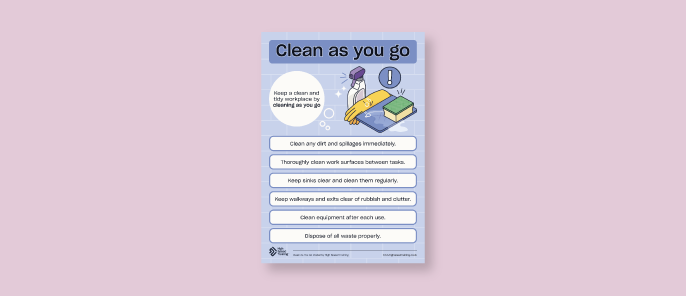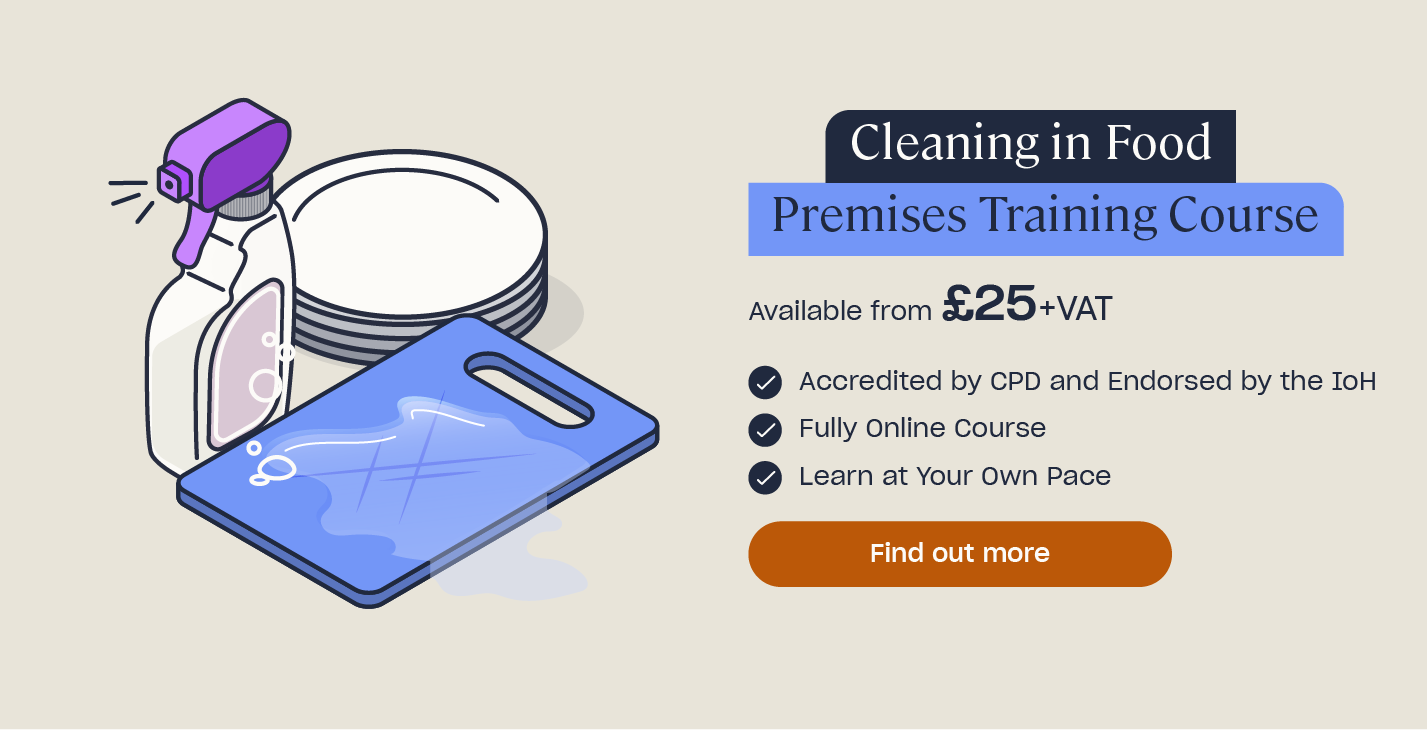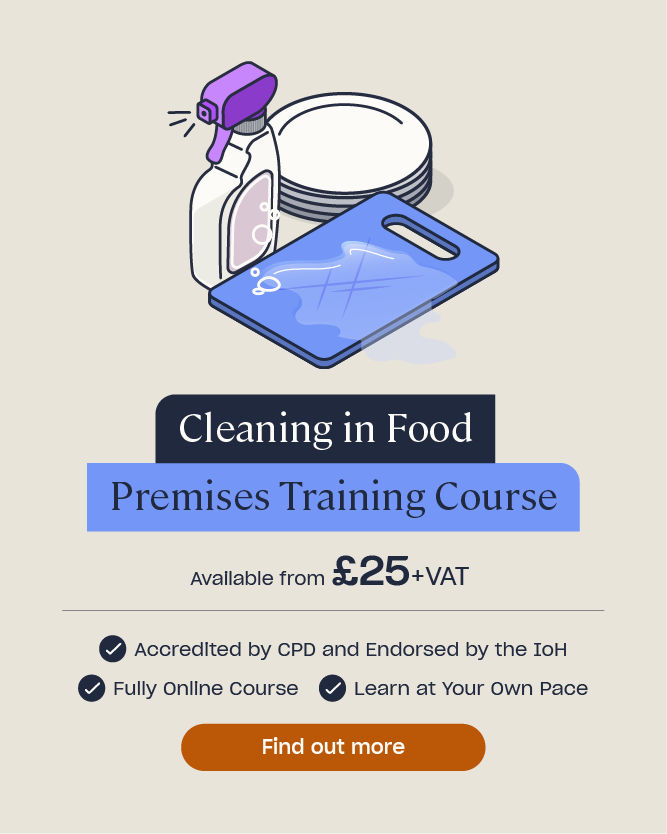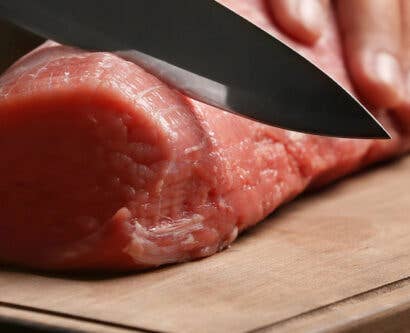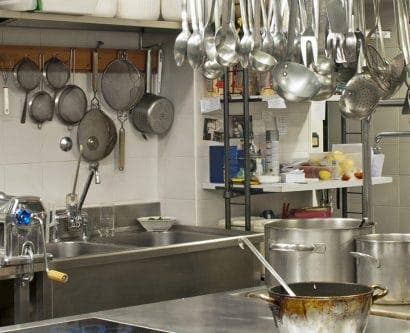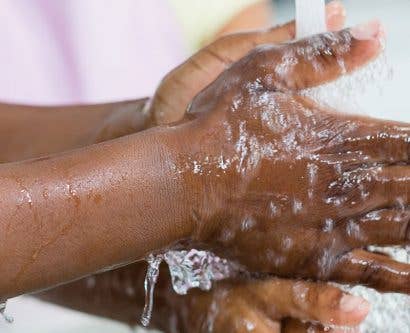What is a ‘Clean As You Go’ Policy?
Robust cleaning routines are an important part of maintaining food safety. Effective cleaning can minimise the risk of cross contamination and reduce the risk of attracting pests. A ‘clean as you go’ (CLAYGO) policy is a cleaning strategy that encourages continuous cleaning throughout the working day and embeds cleaning as an integral part of your daily routine, helping to keep surfaces and equipment clean and hygienic.
In this article we will outline what CLAYGO means and what you might include in your own CLAYGO policy. We will also provide guidance on how to manage the policy in your food business and provide a free poster to reiterate your CLAYGO expectations.
What Does Clean As You Go Mean?
Clean as you go is a cleaning technique that helps to maintain high standards of hygiene. It encourages staff to clean up after themselves as they complete tasks. This means immediately cleaning up any food debris or spills rather than leaving them till later. As such, cleaning as you go can help to reduce the accumulation of dirt and clutter.
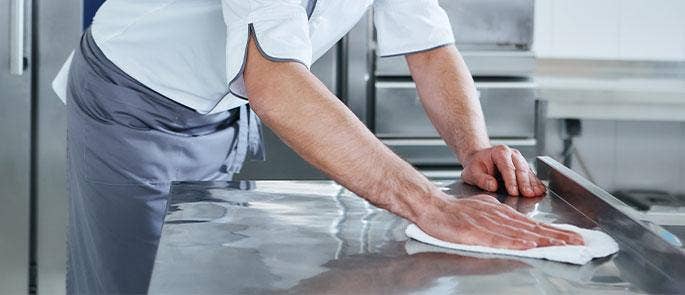
CLAYGO encourages continuous and immediate cleaning and embeds regular cleaning throughout the day as part of your normal daily routine. There are two types of cleaning under the CLAYGO method; urgent and non-urgent. Urgent cleaning is anything that may pose an immediate risk to health, hygiene or safety such as a spillage on the floor that might cause someone to slip and fall. Non-urgent cleaning is a part of your daily processes such as wiping surfaces, placing rubbish in bins and cleaning dirty equipment.
What to Include in a Clean As You Go Policy
The concept of cleaning as you go is relatively self-explanatory and this may cause you to question why you would need a policy. However, without clear expectations, staff may assume that it’s always someone else’s responsibility and one person may end up constantly tidying up after everyone else.
A CLAYGO policy should set clear expectations regarding cleanliness in the kitchen. Examples of what you CLAYGO policy might mandate include:
- Cleaning any dirt and spillages immediately.
- Wiping and disinfecting work surfaces between tasks.
- Cleaning equipment after each use.
- Keeping walkways and exits clear of rubbish and clutter.
- Keeping sinks clear and clean.
- Disposing of waste immediately.
- Emptying the bin throughout the day.
Guidance from the Food Standards Agency (FSA) includes the rationale behind why cleaning as you go is important. For example, washing work surfaces thoroughly between tasks will help to prevent dirt, bacteria and allergens from spreading to other food. It’s a good idea to include the ‘why’ in your policy so that staff are aware of the importance of maintaining these standards and the potential ramifications should their standards slip.
Looking for More?
Our wide range of Food Hygiene Training can provide you and your staff with the necessary knowledge to keep food safe. Our Cleaning in Food Premises Training Course in particular can support your CLAYGO policy by providing staff with an understanding of how to protect food and customers with robust cleaning practices.
How to Manage a Clean As You Go Policy
The best way to manage a CLAYGO policy is to incorporate facets of it into every day processes and duties. This may include daily checks of high traffic areas such as bathrooms or a stringent opening and closing cleaning schedule. A policy is more than just words on a page and it needs to be embodied in daily practices in order to be effective.
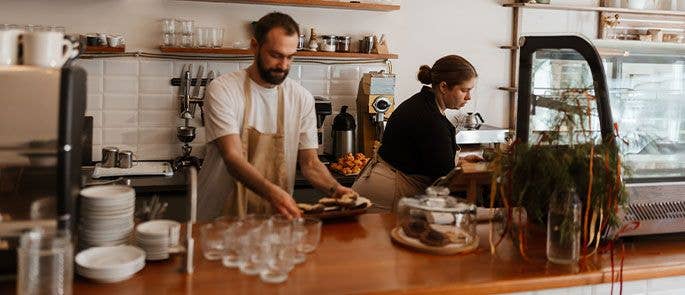
Another way to manage the policy is to ensure that all staff are familiar with it. All staff must adhere to any CLAYGO policy that you have in place. As such, it’s important to set this expectation from the get go. This can be achieved when onboarding staff by including it in their training. It’s also important to ensure that all staff model the expected behaviour so that new/junior members of staff understand that it is a business wide approach. Avoid setting the expectation that only new/junior members of staff should adhere to the policy as cleanliness in the kitchen is everyone’s responsibility, irrespective of their seniority.
Clean As You Go Poster
Below you will find a free CLAYGO poster which you can download and use in your business. It’s important that the poster is prominently displayed so that it can serve as a continuous reminder to staff of the hygiene standards that they should follow.
Further Resources:
- Promoting a Food Safety Culture: Free Assessment Guide
- How to Prepare for an EHO Inspection: Free Checklist
- Cleaning in Food Premises Training Course


